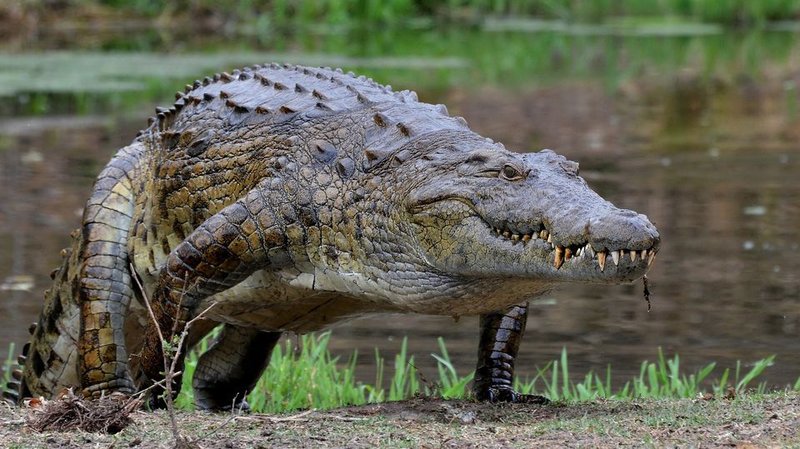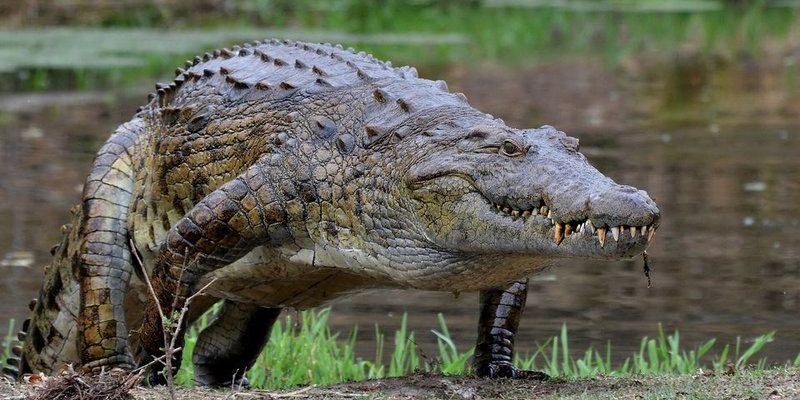
Imagine walking along the banks of the Nile River, feeling the warmth of the sun on your skin while the gentle sounds of flowing water surround you. Suddenly, you spot a Nile crocodile basking on a rock. While it seems perfectly at home, the reality is that these creatures face numerous threats that could endanger their very existence. In this article, we’ll break down the current status of the Nile crocodile and what’s being done to ensure their survival.
The Current Status of Nile Crocodiles
To understand if the Nile crocodile is endangered, we first need to look at their population numbers. According to the International Union for Conservation of Nature (IUCN), the Nile crocodile is classified as a species of “Least Concern.” This means that, on a broad scale, they aren’t facing immediate extinction. However, that doesn’t tell the whole story.
Many local populations are in decline due to habitat destruction, hunting, and human-wildlife conflict. It’s like having a family of turtles in your backyard: if the pond dries up or the area becomes too populated, their numbers could dwindle. Similarly, while Nile crocodiles can be found in diverse habitats across Africa, not every locale is thriving.
Habitat and Range
Nile crocodiles inhabit a variety of freshwater environments, from rivers and lakes to marshes. They are commonly found in sub-Saharan Africa and are known for their adaptability. However, they prefer areas with abundant food sources and suitable nesting sites. As urban areas continue to expand and agriculture encroaches on their habitats, these critical environments are being lost.
It’s like a child trying to play in a yard filled with obstacles. Eventually, they might give up on playtime altogether if they can’t find a safe space. For Nile crocodiles, the loss of natural habitats leads to increased competition for food, which further threatens their populations.
Threats to Nile Crocodiles
Several key threats are pushing the Nile crocodile toward the edge of endangerment. Let’s break them down:
- Habitat Destruction: As mentioned earlier, urban development and agriculture impact their habitats. Wetlands are drained for farming, and rivers are dammed, cutting off crucial breeding grounds.
- Illegal Hunting: In some areas, Nile crocodiles are hunted for their skin and meat, which can be quite valuable. This not only lowers their numbers but also disrupts their natural behaviors.
- Human-Wildlife Conflict: As humans encroach on their territory, conflicts arise. Crocodiles may attack livestock or even people, leading to retaliation against them.
These threats don’t just happen in isolation; they often overlap, creating a web of challenges for Nile crocodiles. Without appropriate measures, these combined issues can create a precarious situation.
Conservation Efforts Underway
Fortunately, there are many organizations and initiatives working hard to protect Nile crocodiles. Conservation efforts are a bit like a team of superheroes coming together for a common cause. Let’s take a look at some of the notable projects:
- Community Education: Many programs focus on educating local communities about the ecological importance of Nile crocodiles. By encouraging coexistence, these initiatives help reduce human-wildlife conflict.
- Protected Areas: Establishing national parks and wildlife reserves creates safe havens for Nile crocodiles. These areas also promote biodiversity and protect other species living in the same habitats.
- Regulation of Hunting: Enforcing stricter regulations on crocodile hunting helps ensure that the species is not over-exploited. Some regions even promote sustainable hunting practices that benefit local communities.
Each of these efforts contributes to the larger goal of stabilizing Nile crocodile populations and ensuring their future.
Role of Local Communities
Local communities play a crucial role in Nile crocodile conservation. By involving them in conservation efforts, the stakes become more personal. When people understand that protecting crocodiles benefits their environment, they’re more likely to support preservation efforts.
It’s much like a family working together to maintain a garden. When everyone pitches in, the garden thrives, and so does the community. In many cases, local people have become advocates for crocodiles, sharing their stories and knowledge with others.
How You Can Help
You might be wondering, “What can I do to help?” Here are a few small, impactful steps:
- Support Conservation Organizations: Donate or volunteer with groups focused on Nile crocodile conservation.
- Spread Awareness: Share information about Nile crocodiles and their plight through social media or discussions with friends.
- Choose Sustainable Products: Make mindful purchasing decisions that don’t contribute to habitat destruction or illegal hunting.
Every little action counts and can make a difference in the long run.
Future Outlook for Nile Crocodiles
As we look to the future, the outlook for Nile crocodiles is cautiously optimistic. Conservation efforts are gaining traction, and more people are becoming aware of the importance of protecting this incredible species.
However, it’s essential to remain vigilant. The challenges they face are real and often complicated. Like a game of chess, each move counts. Balancing conservation with human development will require creativity and cooperation.
If we work together, we can create a lasting impact for Nile crocodiles and preserve their place in our world.
In conclusion, while the Nile crocodile is not currently classified as endangered, their populations are under pressure from various threats. Conservation efforts are in full swing, and with community support and awareness, there’s hope for a brighter future for these majestic creatures. By taking action and spreading the word, we can all be part of the solution, ensuring that Nile crocodiles continue to thrive in their natural habitats for generations to come.

